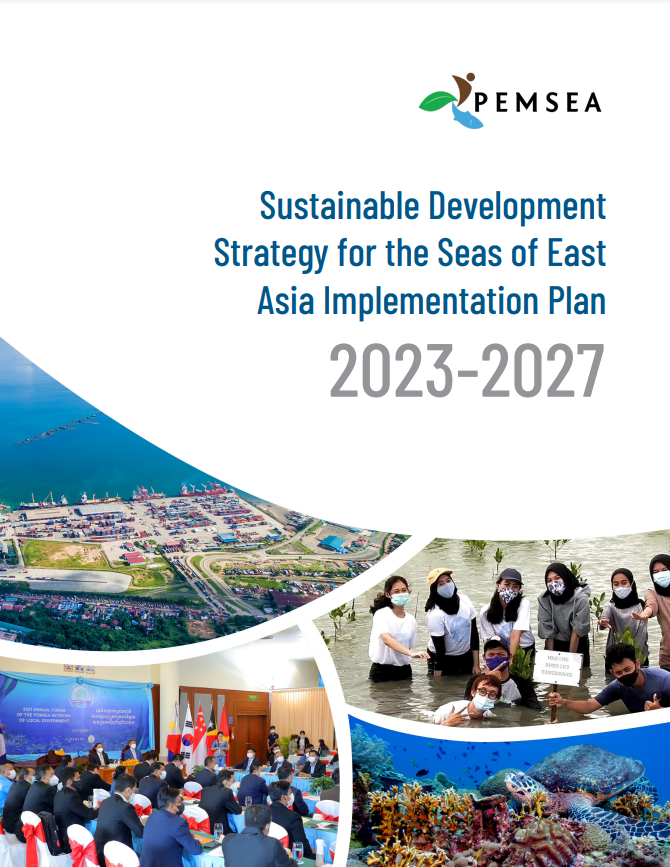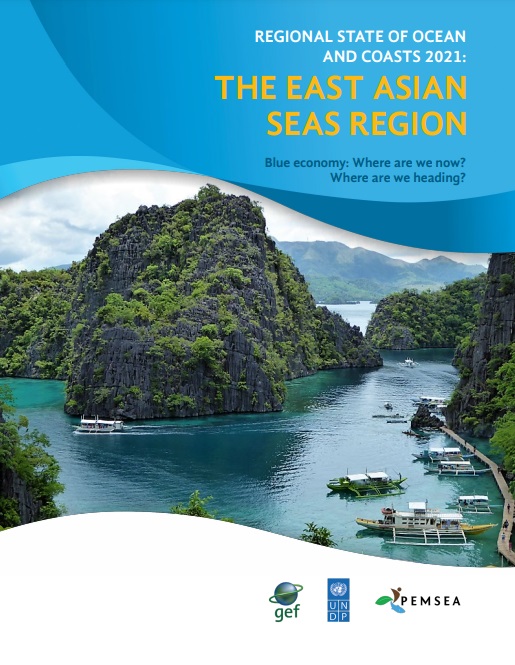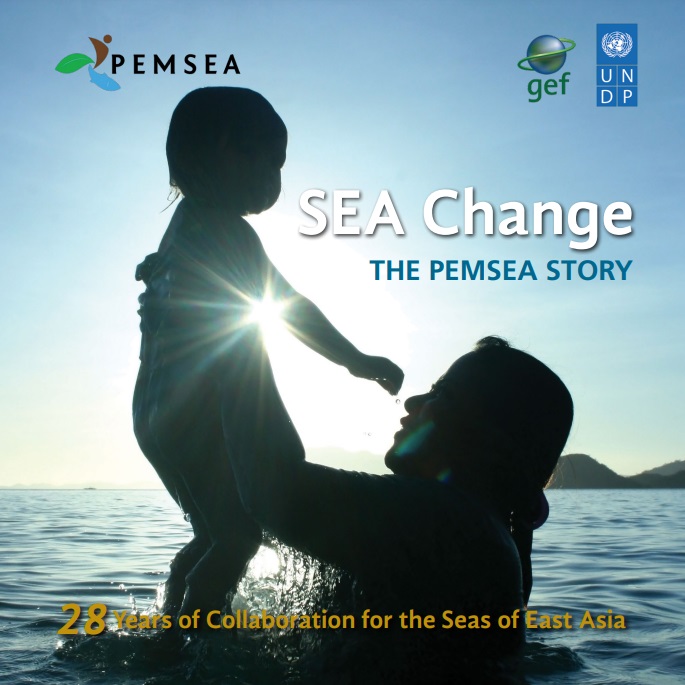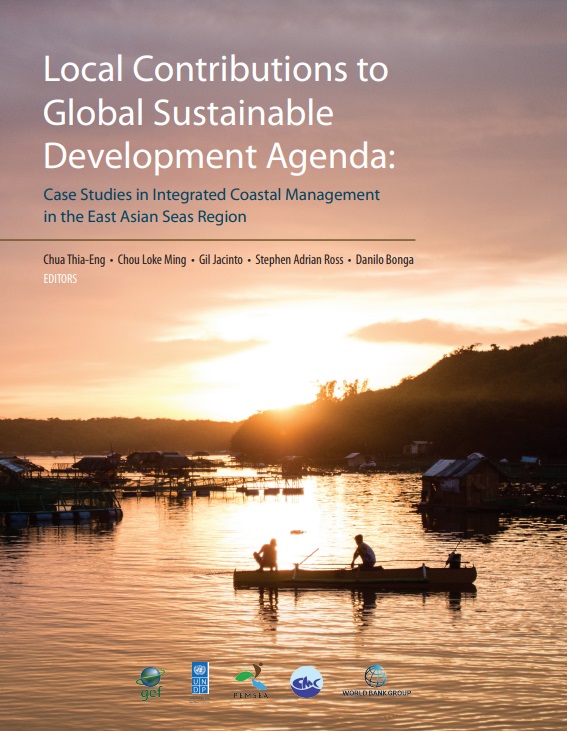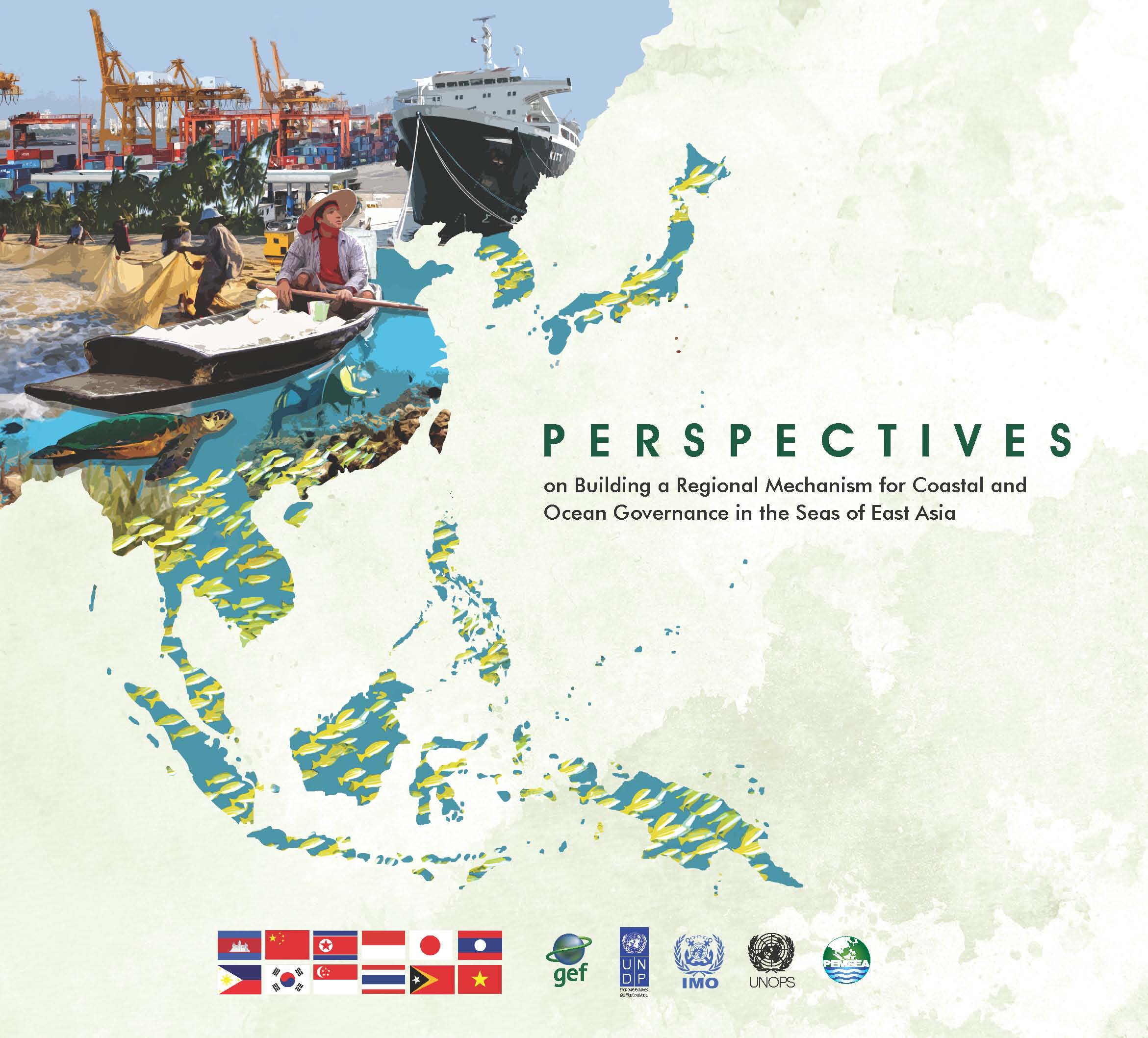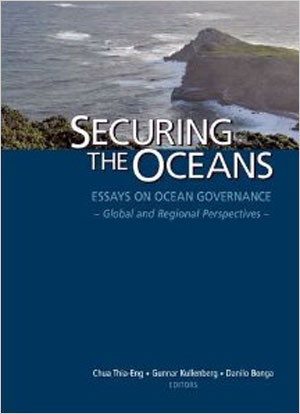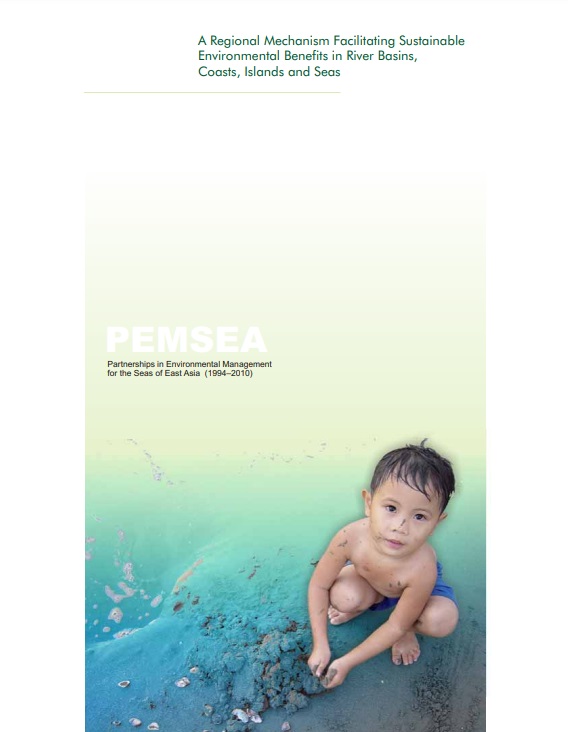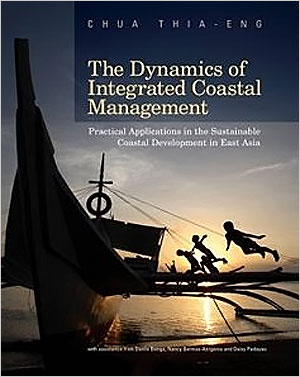
Breadcrumb
Sustainable Development Strategy for the Seas of East Asia Implementation Plan 2023-2027
The SDS-SEA IP 2023-2027 was developed through a consultative and participatory process, involving the Advisory and Technical Working Group and selected representatives from Country and Non-Country Partners and PNLC. Partners set new targets by taking stock of the SDS-SEA accomplishments for the period 2018-2022 and guided by the post 2020 initiatives and actions to accelerate sustainable solutions in line with the SDGs at global, regional and national levels, the COVID-19 post pandemic recovery measures, and more importantly, the direction provided in the Preah Sihanouk Ministerial Declaration for stepping up actions on the road to 2030.
Regional State of Ocean and Coasts 2021: The East Asian Seas Region (VOLUME 1)
The ocean covers 70% of the surface of our blue planet and constitutes >95% of the biosphere. Life originated in the ocean, and it continues to support all life today by generating oxygen, absorbing carbon dioxide, recycling nutrients, regulating global climate and temperature, and providing food, energy, water, and other resources.
The ocean wealth of the EAS region.
Ocean in the national income accounts. The ocean economy in the EAS region is around US$1.5 trillion in value added in 2015.
Employment in the ocean economy. There are 61 million people directly employed in the ocean economy, however, more are dependent on the ocean for their livelihoods as small-scale, household, and informal activities are not included in the current accounts.
Blue capital and coastal and marine ecosystem services. The EAS region is home to a third of the world’s mangrove forests, seagrass beds, and coral reefs. These coastal and marine ecosystems, together with the tidal flats and salt marshes, are estimated to be worth around US$2 trillion. The blue carbon value is estimated to be US$68 billion for mangroves and US$40 billion for seagrass.
But our ocean is under stress… from climate change, pollution, habitat and biodiversity loss, overfishing and destructive fishing, and other unsustainable human activities. Bold and innovative actions are needed to protect ocean health, build more sustainable and resilient economies, reduce poverty, and help the most vulnerable.
Why blue economy?
The ocean has a major role to play in humanity’s future. As the EAS Region is gearing up to recover from the COVID-19 pandemic, the Blue Economy offers a development strategy anchored on sustainable and inclusive prosperity, low-carbon growth, and protection of ocean ecosystems to ensure food security, jobs and livelihoods, resiliency, recreation, and wellbeing. The blue economy can help the region by:
- Creating nature-based jobs, such as aquaculture, ecotourism, restoration of coastal habitats, and managing protected areas
- Offering new economic opportunities and jobs to reduce poverty through the sustainable development of key oceanic sectors, such as fisheries, aquaculture, tourism, ports, shipping, shipbuilding, and marine renewable energy, and their value-chains, and supporting new industries like marine biotechnology
- Helping the region to mitigate and adapt to climate change through blue carbon, offshore wind and ocean energy, decarbonization, and new technologies
- Fostering nature-based infrastructure, such as mangroves, to provide protection from coastal erosion, flooding, storm surge, tsunami, and other natural disasters (as well as other ecosystem services)Improving fisheries by addressing the underlying causes of overfishing and IUU fishing, and addressing aquaculture sustainability, quality, and safety
- Mitigating the threats to human and ocean health due to marine pollution, including nutrients and marine and land-based plastics, through establishment of more wastewater treatment facilities with reuse applications, integrated solid waste management systems, and reuse of plastics and other recyclables
- Advocating the inclusion of women, small-scale fishers, informal workers (such as those in the aquaculture, ports, shipping, tourism, trade and logistics industries)Advancing connectivity and trade through ports, shipping, submarine communications, and digitalization
- Promoting science, innovation, and technologies to transform the ocean economic sectors to become sustainable, climate-smart, low-carbon, resilient, and more efficient and productive
- Promoting sustainable ocean financing and new financing modalities to support climate action, biodiversity conservation, and blue economy development.
- Informing policymakers and stakeholders about the value of the ocean, and the need for bold actions now for the benefit of the future generations
More information in the brochure. A Supplemental Report is also available.
Supplemental Report: Regional State of Ocean and Coasts 2021 (VOLUME 2)
This report is a supplement to the Regional State of Oceans and Coasts (RSOC) 2021. Blue Economy: Where are We Now? Where are We Heading?. The impacts of COVID-19 on the ocean economy, and health of the people and the ocean are explored in this supplemental report. Using the initiatives, best practices, and lessons learned discussed in the RSOC report, this supplemental report provides key recommendations to move forward with the blue economy as a way for a sustainable, inclusive, and resilient recovery.
More information in the brochure.
The PEMSEA Story
The PEMSEA Story: 28 years of collaboration for the Seas of East Asia chronicles the partnerships’ journey of transformation which started as a fledgling pollution project in 1993 to become a regional coordination mechanism with an international legal personality.
PEMSEA works on a range of coastal and marine management programs such as biodiversity conservation, climate change and disaster risk reduction, marine pollution and solid waste management and cross cutting programs on ocean governance, capacity development and knowledge management and blue economy and sustainable financing under the Sustainable Development Strategy for the Seas of East Asia (SDS-SEA).
This book provides an updated narrative on why strategic partnerships and integrated management solutions are important elements in establishing a regional partnership mechanism to manage large marine ecosystems. It focuses on the successes and lessons learned from PEMSEA’s experience at the local, national and regional levels to protect, manage and restore coasts and ocean, aligned with international agreements and targets such the UN SDGs, the Aichi Biodiversity Agreement, the UN Framework Convention on Climate Change, among others.
The story was developed primarily by consolidating and updating information provided by the UNDP/GEF Scaling Up Implementation of SDS-SEA project’s knowledge products and reports and supplemented by interviews with key partners, collaborators and stakeholders.
Local Contributions to Global Sustainable Development Agenda : Case Studies in Integrated Coastal Management in the East Asian Seas Region
The 25th Anniversary publication of Partnerships in Environmental Management for the Seas of East Asia (PEMSEA) highlights the sustainable coastal development efforts of PEMSEA partners over the past quarter century. The multi-sector, interdisciplinary approach applied in the design and implementation of integrated coastal management (ICM) programs in East Asia has generated a wealth of knowledge and experiences in policy and functional integration that cut across coastal use sectors, disciplines, levels of government, and stakeholders, as well as spatial and temporal scales.
This 566-page publication seeks to provide the reader with:
- A comprehensive discussion of the ICM system backed by 47 case studies;
- A series of case studies written by local leaders, managers and practitioners, natural and social scientists, academicians, private sector, and partners from nongovernment organizations;
- Good practices and lessons learned to support replication and scaling up of ICM in the region; and
- An operational modality that other regions of the world can consider adopting and applying.
Print version is available for FREE. Pay only for the shipping cost.
Perspectives on Building a Regional Mechanism for Coastal and Ocean Governance in the Seas of East Asia
PEMSEA's special anniversary publication, entitled Perspectives on Building a Regional Mechanism for Coastal and Ocean Governance in the Seas of East Asia, documents the organization's rich experience in forging dynamic partnerships and collaboration in the East Asian Seas (EAS) region in the past 20 years. The publication features different chapters written by several key individuals who have played a vital role in PEMSEA's evolution over the years. Each chapter highlights PEMSEA's remarkable journey including milestones it has achieved, challenges faced and valuable lessons learned in the last two decades. With this, the publication also puts forward the directions and future prospects of PEMSEA as it transforms into a full-fledged and self-sustaining international organization in coastal and ocean governance in the EAS region. Some notable contributors include Dr. Chua Thia-Eng, former Regional Programme Director of PEMSEA; Dr. Alfred Duda, former Senior Advisor of the Global Environment Facility International Waters Focal Area; Mr. Koji Sekimizu of the International Maritime Organization; and Ambassador Mary Seet-Cheng of the East Asian Seas Partnership Council. Former staff members and collaborators also shared short anecdotes on their experiences working with PEMSEA.
Print version is available for FREE. Pay only for the shipping cost.
Securing the Oceans : Essays on Ocean Governance : Global and Regional Perspectives
Published a decade after the 1998 Year of the Ocean, the 25-chapter Securing the Oceans: Essays on Ocean Governance is primarily aimed at increasing the awareness of the general public on coasts and oceans and at strengthening their understanding of the functioning of the ocean, land-sea interactions, ocean dynamics and ecosystem functioning. The book is published jointly by PEMSEA and the Nippon Foundation and is edited by Chua Thia-Eng, Gunnar Kullenberg and Danilo Bonga. The volume contains essays written by 25 authors in their different capacities as scientists, economists, lawyers, teachers, managers, users of marine resources, national and international civil servants, and administrators. Parts I, II and III of the book bring out the global perspective on ocean governance. Various case studies put forward the interconnectivity between regional seas in terms of political, socioeconomic, cultural, and especially ecological linkages. Part IV underscores the paradigm shift in the traditional concept of ocean governance to a more proactive and dynamic approach in securing the ocean for peaceful use. This chapter includes the conclusions forwarded by the participants in a regional workshop on "Securing the Oceans" at the 2006 East Asian Seas Congress. The conclusions and recommendations from the EAS Congress 2006 are published in two issues of the Tropical Coasts. The publication of this book is made possible through a grant from the Nippon Foundation in support of the Research Task Force on the Dynamics of Regional Cooperation on Oceans and Coasts. It is hoped that this book will further stimulate and strengthen the pursuit of sustainable ocean development so as to secure the ocean and its resources for our future generations.
Print version is available for FREE. Pay only for the shipping cost.
PEMSEA: Partnerships in Environmental Management for the Seas of East Asia (1994–2010): A Regional Mechanism Facilitating Sustainable Environmental Benefits in River Basins, Coasts, Islands and Seas (PEMSEA Portfolio)
This document is intended to provide readers with a general background and rationale to the various activities undertaken by PEMSEA, as well as its evolution and transformation since 1994. The major activities, outputs and outcomes over the past 14 years serve as the foundation on which new initiatives are being developed and undertaken from 2007 to 2010.
The Dynamics of Integrated Coastal Management : Practical Applications in the Sustainable Coastal Development in East Asia
Authored by Dr. Chua Thia-Eng, this 16-chapter book shares the author's 20 years of practical experience in addressing issues related to the integrated management of the coasts and oceans. This book makes clear the rationale underlying the use of the integrated management approach, and the practices used to apply sustainable development principles and international environmental instruments when undertaking ICM programs. It also provides a basic framework within which various problem-solving management-oriented activities can be developed, and outlines the processes that can be used to guide their planning and implementation.
